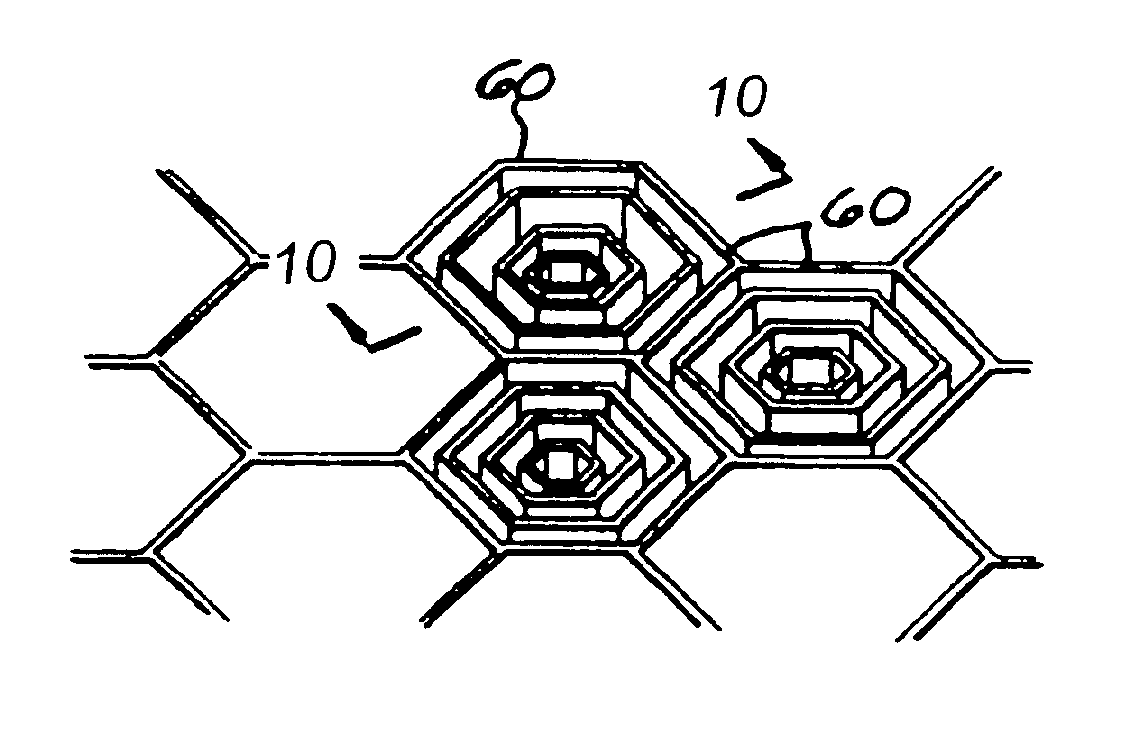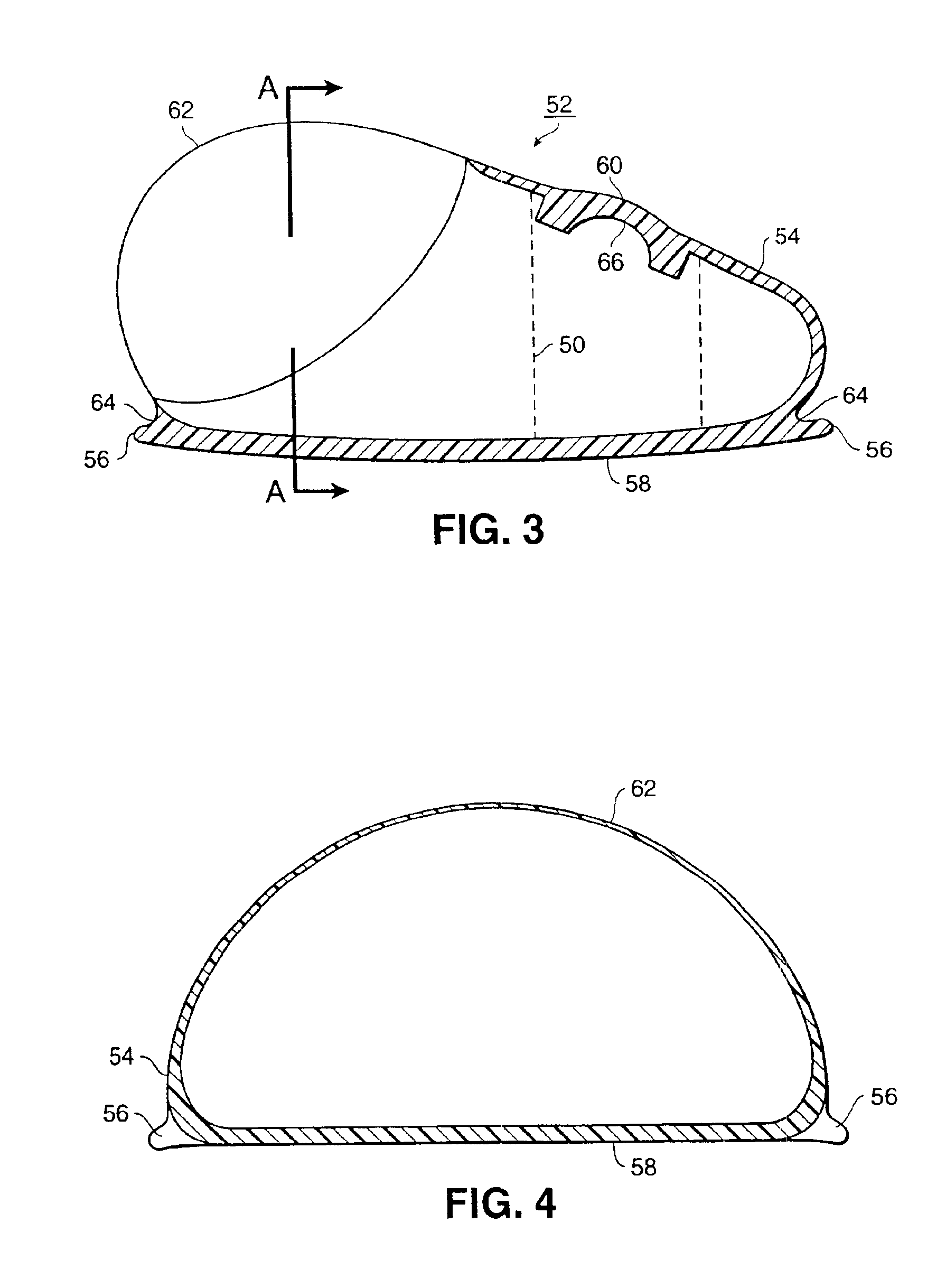Dual-sided, texturized biocompatible structure
a biocompatible, dual-sided technology, applied in the field of implantable tissue expanders, can solve the problems of prohibitively expensive, difficult to create a normal teardrop shaped and normally pendant breast, and commercially considered less than desirabl
- Summary
- Abstract
- Description
- Claims
- Application Information
AI Technical Summary
Benefits of technology
Problems solved by technology
Method used
Image
Examples
Embodiment Construction
[0031]The present invention is based upon the previously disclosed method of liquid silicone molding of textured implants (my U.S. Pat. No. 5,354,338), directional expansion of implants and varying wall thickness (my U.S. Pat. No. 4, 955, 907), pressure adaptive structures, (my U.S. Pat. No. 5,383,929), as well as novel elements disclosed herein and methods of manufacture of the combination of elements.
[0032]The term implant is used broadly to include any foreign object which is inserted into the body. An expander is an object which is an implant because it is placed within the body. An expander is ordinarily placed within the body, and over time, such as a matter of weeks or a few months, is gradually inflated so as to expand and move adjacent soft tissues. After expansion, the expander may be removed from the body and the space filled with another implant, or optionally, the expander may be converted into a permanent implant in the body. In the latter case, this may involve changi...
PUM
| Property | Measurement | Unit |
|---|---|---|
| Thickness | aaaaa | aaaaa |
| Width | aaaaa | aaaaa |
Abstract
Description
Claims
Application Information
 Login to View More
Login to View More - R&D
- Intellectual Property
- Life Sciences
- Materials
- Tech Scout
- Unparalleled Data Quality
- Higher Quality Content
- 60% Fewer Hallucinations
Browse by: Latest US Patents, China's latest patents, Technical Efficacy Thesaurus, Application Domain, Technology Topic, Popular Technical Reports.
© 2025 PatSnap. All rights reserved.Legal|Privacy policy|Modern Slavery Act Transparency Statement|Sitemap|About US| Contact US: help@patsnap.com



